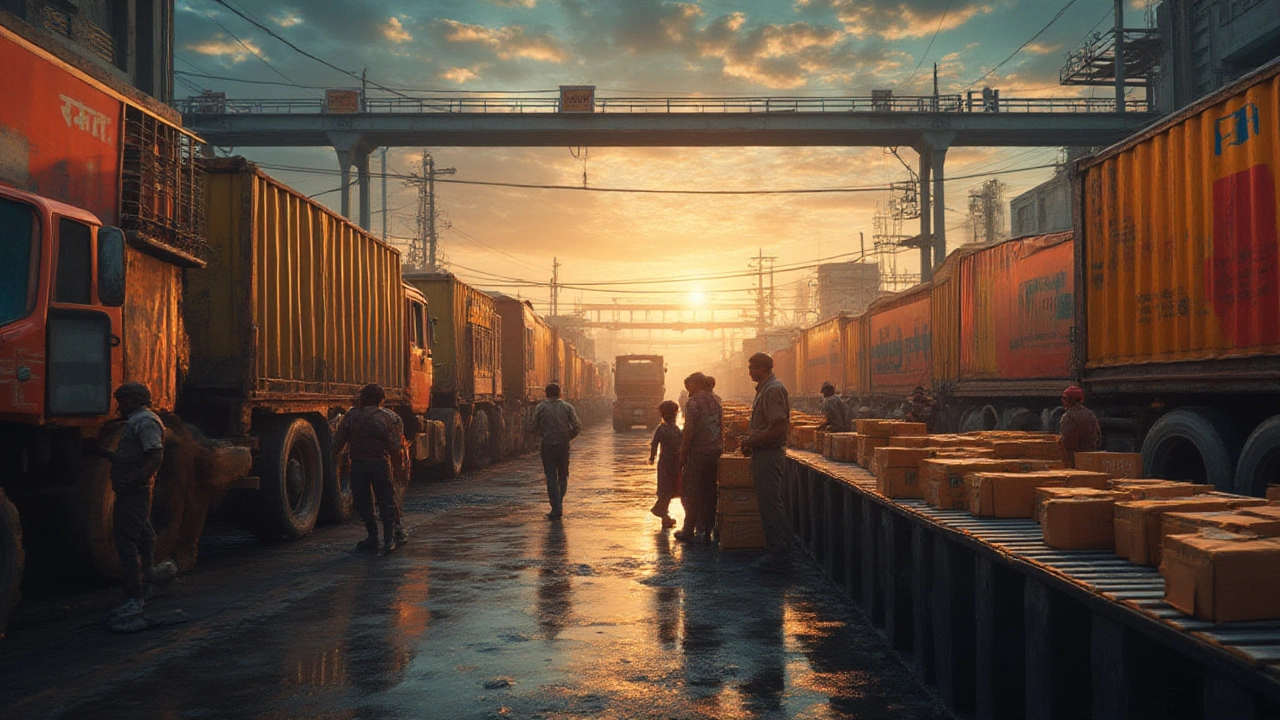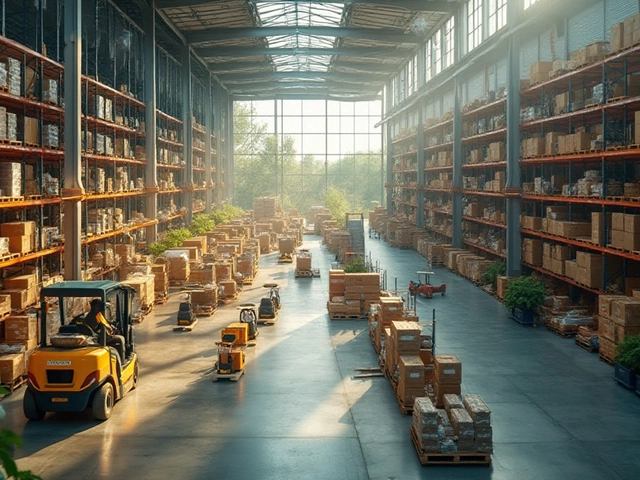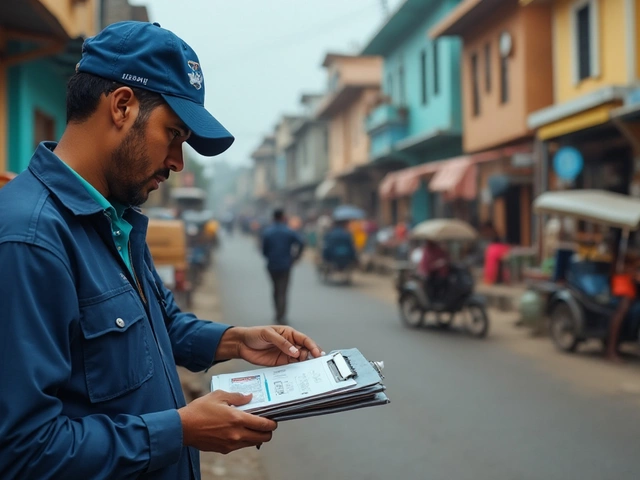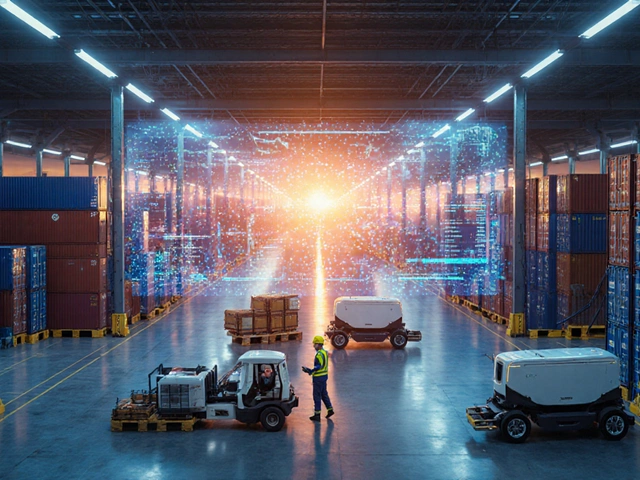Picture your favorite gadget, sticking in a warehouse, somewhere halfway across the country. Maybe you’ve never considered how it leaves that shelf and finds its way to your sofa, right on time. But it’s far from magic. Behind those seamless deliveries stands an army of experts, spreadsheets, tracking numbers, lorries, forklifts, and a whole lot of planning. This is the secret life of a logistics company—a world most folks never get to peek into, but one that keeps the modern world spinning. Whether it’s your online shopping haul, a diner’s supply of bacon, or life-saving hospital gear, none of it moves without the gears of logistics companies working in the background. Thinking their job stops at loading boxes onto a truck? That barely scratches the surface.
The Core Functions of a Logistics Company
A logistics company is like the nervous system of business deliveries and supply chains. Their core job is moving goods from point A to point B, but not in a straight line or a simple trip. Think about the last product you bought online—before you saw it on your doorstep, it likely took a journey involving several different players. Logistics companies connect those dots. They plan transport routes, handle customs, book ships or lorries, arrange storage, and deal with any bumps along the way. Planning is everything. They map out the fastest, cheapest, and safest ways to ship everything from shoes to smartphones. Every single step gets tracked and nudged along, so packages don't disappear into a black hole.
But it’s not just about transport. These companies take care of inventory control, making sure warehouses are stocked with the right amount of goods at the right time. No one wants an empty shelf or piles of unsold boxes. They sort the mess, keep records, and even handle returns if something goes wrong. When the Suez Canal was blocked in 2021, worldwide shipping delays cost billions—logistics companies had to scramble for solutions, reroute goods, and keep businesses afloat. It’s quick thinking and relentless attention to detail.
Logistics companies also specialise by industry. Some focus on moving food—think refrigerated trucks, time-sensitive routes, and strict hygiene rules. Others handle pharmaceuticals, where temperature and traceability can mean life or death. In e-commerce, speed is king. That’s why many of these companies invest millions in tech: satellite tracking, AI-driven route optimization, automated warehouses with robot pickers. The result? A carton of milk or a £300 smartphone lands exactly where it should, right when you expect it.
Insurance and risk management come baked into their services too. What if a truck crashes, or a parcel gets lost? Logistics companies offer policies and processes to handle claims, replace goods, and avoid chaos. They also invest huge sums in security—think anti-theft seals, secure depots, and 24/7 monitoring.
Finally, logistics companies keep tabs on performance metrics: how long deliveries take, how many packages go missing, and how satisfied the customer is at the end. Every lost parcel means more than an unhappy customer – it’s lost business, so they fix leaks fast. Without all of these moving parts working together, the world’s shop shelves would empty fast, hospitals would run out of supplies, and online shopping—the kind we take for granted—would come to a grinding halt.
Behind the Scenes: How Goods Move from A to B
Ever tracked a parcel online and wondered about its journey? The story is way less straightforward than you think. When a business hires a logistics company, the process kicks off way before anything begins to move. First comes planning—a blueprint covering what’s being shipped, where it’s going, how much it weighs, and how fast it needs to arrive. This plan considers everything from road traffic to weather warnings and even wildcards like strikes or political unrest. Experienced planners run advanced software that can simulate journeys, swap lorry routes, and avoid hotspots.
Next up is booking transport. For local shipments, logistics companies might use their own fleet of vans and lorries. For international routes, they’ll partner with airlines, cargo ships, or rail networks. There are loads of little details, too: customs paperwork, hazardous materials documentation, special permits for oversized goods. Forget one step and your shipment could get stuck at the border for weeks. Imagine how stressful that is if you’re a florist waiting for Mother’s Day roses.
Once paperwork’s sorted, collection teams pick up the goods, sometimes straight from a factory, sometimes a massive warehouse. These warehouses are high-security labyrinths, some equipped with robots zipping around shelves, picking goods on demand as orders ping in. It isn’t just stacking boxes; it’s tracking, sorting, cycle-counting, and prepping every order with barcodes and sensors. The goal? Zero mistakes.
Loading comes next. Forklifts swing into action, and pallets head onto trucks or into shipping containers. Remember, different items need different environments—fresh salmon ready for export gets cooled with dry ice, while iPhones travel in shockproof containers. The vehicle’s loaded up with the day’s manifest and GPS-tracked for every mile along its route. Any delays? Drivers and control rooms communicate in real time to problem-solve—whether it’s traffic, flat tyres, or new border regulations post-Brexit that throw a spanner in the works.
At every handover point—be it an airport, seaport, or city depot—teams check shipments in and out with scanners, update digital logs, and prepare parcels for the next leg. International shipping adds extra layers. Customs checks can be brutal, especially with strict regulations in the US or EU. Expertise in paperwork is vital—logistics companies often keep customs brokers in-house just to speed things up.
Once goods are near their final stop, everything’s split for local delivery, called the “last mile.” This bit’s trickier than it sounds—city centre roads, parking bans, and even dog-walking neighbours can slow deliveries. That’s why logistics companies invest in route optimization, electric vans for low-emission zones, and even cycle couriers in places like London.
If something goes wrong—a crate cracks or a parcel’s missing—customer service jumps in. Logistics teams chase things down, reroute deliveries, or arrange for replacements. They know every delay dents trust, so even after delivery, their work isn’t quite done. Feedback gets logged, metrics analysed, and systems tweaked for next time. The whole process can be eye-wateringly fast—world leaders in logistics can deliver thousands of parcels within 24 hours, no matter the distance.
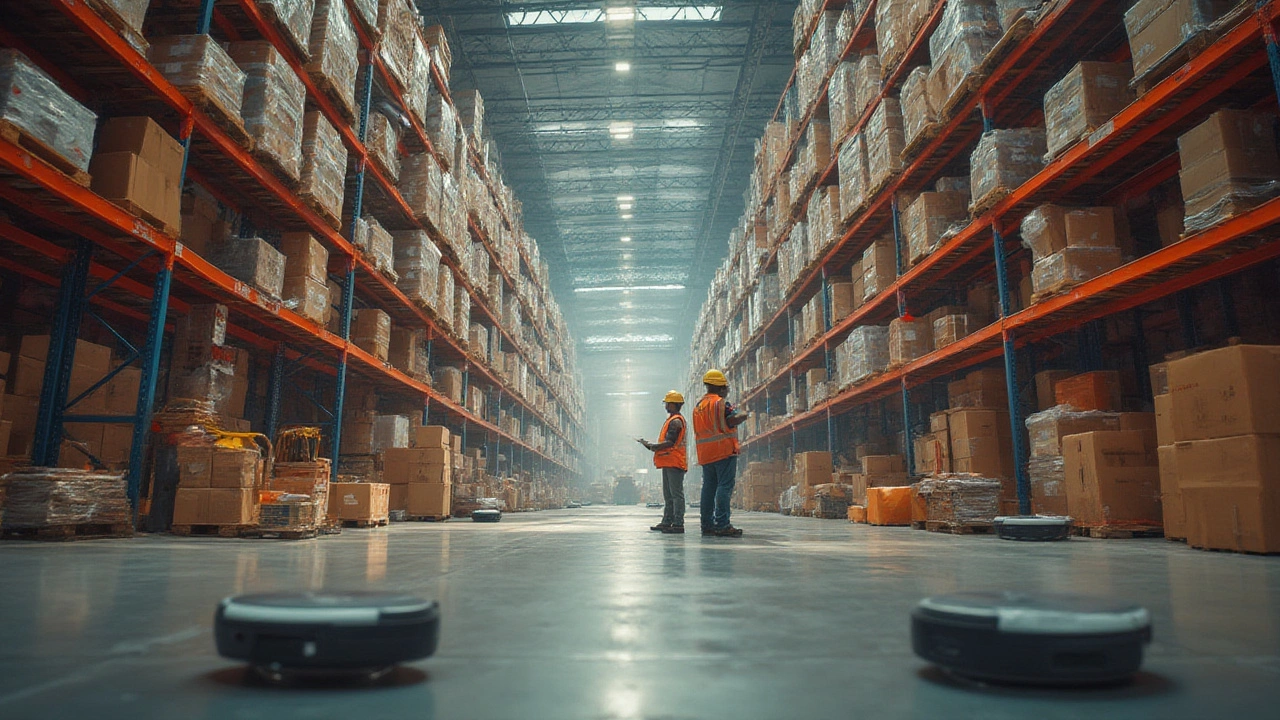
Warehouse Solutions and Inventory Management
Warehouses might sound dull, but they’re where the real action happens. Imagine a building the size of ten football pitches, roof stuffed with cameras, floors full of robots, and shelves loaded with everything from books to high-end trainers. A logistics company doesn’t just rent space—they manage these warehouses to keep stock flowing. Their warehouse managers build systems that know exactly where every banana or PlayStation controller sits. When an order pops in, the system directs workers (or robots) to fetch, pack, and ship—sometimes in less than ten minutes. This level of speed relies on real-time inventory management.
Barcodes and RFID tags are everywhere. Each item gets scanned and tracked as it moves through the building, so there’s never a mystery about stock levels. Behind the scenes, smart software projects how much of each product needs to be in stock. If unicorn slippers start trending, the system flags it so the company can order more before they run out. Got a global product? Logistics companies spread stock across regional warehouses, making it faster to deliver to customers and cheaper (no sending things halfway across a continent).
Returns—a customer’s least favorite, but a retailer’s constant headache—are a big part of the puzzle. Ever wonder how your unwanted jeans get refunded so quickly? Returns flow into the warehouse and are checked for damage, re-shelved, or sent for repair or recycling. The smoother this process is run, the happier the customer, and the cleaner the company’s books. UK data shows that hassle-free returns boost repeat business by up to 30%. Logistics firms design these workflows so returns don’t clog up everything else.
For some products, like food, strict climate control is vital. Chilled and frozen sections need constant monitoring—any glitch can spoil a thousand lunches. Similarly, pharmaceuticals often demand secure, temperature-regulated, and trackable storage, in line with laws like the EU’s GDP regulations. Warehousing teams keep detailed audit trails to stay compliant and win client trust.
Physical safety matters, too. Forklifts, mezzanine floors, slippery conditions—these are hazards logistics companies manage with regular training and strict policies. Some UK warehouses have introduced wearable tech that alerts staff if they wander into danger zones. Automation helps reduce accidents and injuries. Plus, insurance companies love a safe operation, so tight control keeps costs down.
As e-commerce keeps booming, warehouse automation is on the rise. Amazon’s fulfilment centres, for example, run on thousands of robots, which cut pick times and errors. Smaller businesses hire third-party logistics providers (3PLs) to tap into similar tech without massive investments. These partners deal with the headaches of inventory, pick, pack, and shipping—freeing businesses to focus on sales.
Modern Challenges and Trends in Logistics
Logistics companies aren’t just reacting to today’s orders—they’re racing ahead of tomorrow’s challenges. Brexit set off a roller coaster for UK shipping, with new customs rules and delays. COVID-19 twisted supply chains, slowing everything from electronics to garden furniture. Climate action and sustainability targets are now impossible to ignore. In 2025, the big trend is green logistics. Customers want fast delivery and a clean conscience, so companies are electrifying fleets, investing in carbon-offset projects, and designing packaging that’s lighter and recyclable. Major UK carriers now run pilot projects with hydrogen-powered trucks and have banned single-use plastic wrap in many depots.
Tech is shaking up supply chains, too. Smart sensors relay real-time data from cargo, revealing exact location, temperature, and movement. Artificial intelligence spots delays and suggests new routes before things fall behind. Drones are starting to make local deliveries—especially in hard-to-reach or rural areas. Companies like DHL and FedEx are running trials that could soon become standard practice, at least for small parcels.
Labour is another sticking point. Warehouses and delivery firms struggle with shortages, while also needing specialists to handle IT, data analysis, and compliance. To attract talent, many logistics providers offer upskilling programmes and flexible working, recognising there’s no way to automate every problem away.
Cross-border trade is in constant flux. The UK’s trade relationship with the EU, the US-China trade tensions, and geopolitical shocks all impact how easily and cheaply goods can flow. Logistics companies have to be nimble and creative, building backup plans (sometimes called “resilience strategies”) to dodge border blockages. The best logistics firms now keep extra stock in regional warehouses, partner with specialist customs brokers, and prepare alternative routes at a moment’s notice.
There’s also pressure to boost transparency. Customers, whether big retailers or end-users, now expect real-time parcel tracking. Modern logistics companies provide apps and dashboards that update each step of the journey. If something’s late, you’ll know instantly—not days later. This transparency helps businesses tweak supply chains on the fly, responding to demand spikes or interruptions.
Not everything is about shiny new tech. Old problems—damaged goods, traffic gridlock, unpredictable weather—never go away. So logistics companies double down on tried-and-tested protocols, like careful packaging, swing routes around roadworks, and invest in local partnerships. It’s not a glamorous business, but when it works, nobody notices; when it fails, everyone feels it.
In 2025, winning logistics companies are built on adaptability, efficiency, and trust. They’re as close to invisible as possible—silently powering the daily miracle of goods deliveries, helping businesses stump their rivals, and making sure that when someone, somewhere, clicks “Buy Now,” everything works like a charm.
